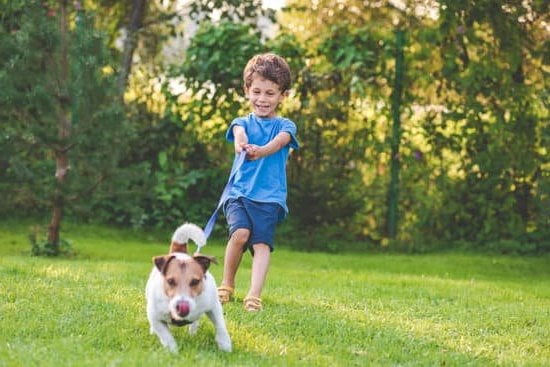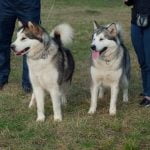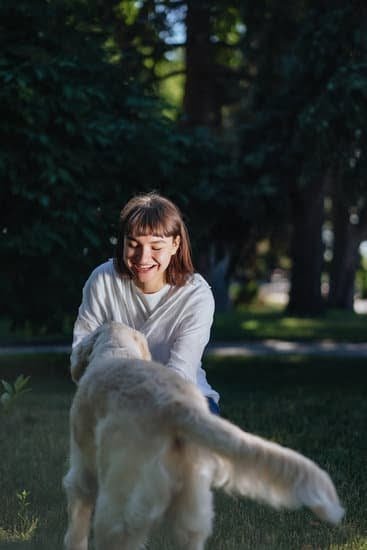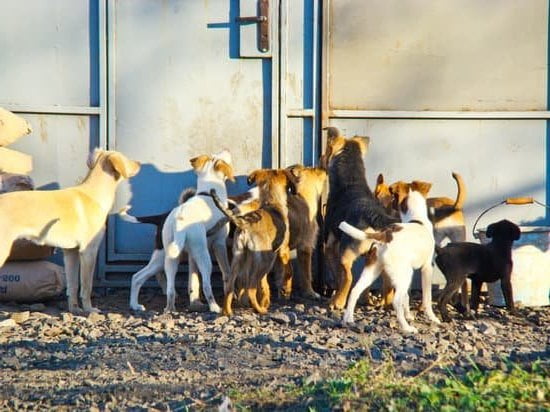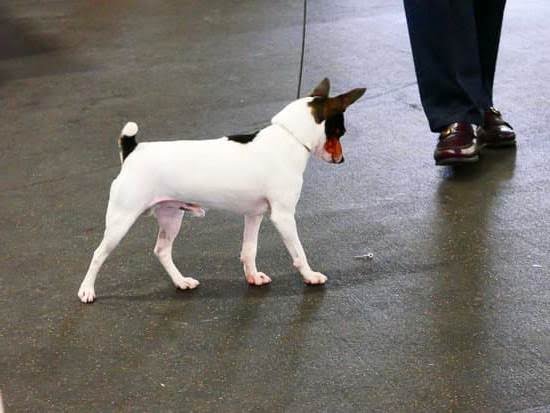Mealtime can often be a struggle for dog owners, especially when their furry companions rely on hand-feeding or refuse to eat without constant supervision. Teaching a dog to eat on its own is an important skill that promotes independence and provides convenience for both the owner and the dog. In this article, we will explore various techniques and strategies to train your dog to eat independently, ensuring a smoother mealtime experience for everyone involved.
For many dog owners, mealtime can become a source of frustration and concern. Some dogs become overly dependent on hand-feeding, requiring their owners to spend excessive time and effort coaxing them to eat. This can be inconvenient, particularly during busy mornings or when the owner is away from home for extended periods. By training your dog to eat on its own, you can alleviate these challenges and establish a healthier eating routine.
Independent eating is not only beneficial for the owner’s convenience but also crucial for fostering a dog’s self-reliance. It encourages them to develop essential life skills and allows them to regulate their intake according to their appetite. Additionally, independent eating is vital for preventing food aggression or possessiveness among dogs, promoting harmonious mealtime behavior in multi-dog households.
In the next sections of this article, we will delve into various aspects of training your dog to eat independently. We will discuss how creating an ideal feeding environment, introducing consistency and routine, choosing suitable food and feeding methods, as well as implementing positive reinforcement techniques can all contribute towards achieving this goal. Furthermore, we will address common challenges that may arise during the training process and provide tips for overcoming them with patience and persistence.
By following these guidelines and putting in consistent effort, you can successfully train your dog to eat on its own over time. So let’s embark on this journey together as we help our four-legged friends become more confident and self-sufficient during mealtime.
Understanding the Importance of Independent Eating for Dogs
Dogs are naturally social animals and often rely on their owners for various aspects of their daily lives, including mealtime. However, it is important to train them to eat independently. Understanding the importance of independent eating for dogs can help dog owners create a healthier and more balanced feeding routine for their furry friends.
Independent eating is crucial for a dog’s overall wellbeing and mental stimulation. When dogs are accustomed to relying on their owners for every meal, it can lead to unhealthy behaviors such as begging, aggressive behavior towards other animals or humans during feeding time, and even obesity. By training your dog to eat independently, you are promoting self-sufficiency and ensuring that they are able to enjoy their meals without relying on constant human intervention.
In addition to promoting physical health, independent eating also provides mental stimulation for dogs. The act of problem-solving and figuring out how to access food from toys or puzzles can help keep their minds sharp and engaged. Engaging in independent eating activities can also provide a sense of accomplishment and satisfaction for your dog.
To encourage independent eating, it is crucial to create the right environment for your dog. This includes providing comfortable feeding areas away from distractions such as noisy appliances or foot traffic. Additionally, establishing a consistent feeding routine and choosing the right dog food and feeding method can greatly contribute to promoting self-feeding behaviors.
| Importance of Independent Eating for Dogs |
|---|
| Promotes self-sufficiency |
| Prevents unhealthy behaviors such as begging or aggression during mealtimes |
| Prevents obesity |
| Provides mental stimulation |
| Gives a sense of accomplishment and satisfaction |
Preparing the Perfect Feeding Environment for your Dog
To successfully train a dog to eat on its own, it is crucial to create the perfect feeding environment. This section will discuss the various factors that contribute to a conducive and comfortable feeding space for your furry friend.
Firstly, it is important to choose an appropriate location for your dog’s meals. Find a quiet and calm area of your home where your dog can eat without distractions or disturbances. This will help them focus on their food and establish a routine around mealtime.
Next, consider the type of bowl or container you use for feeding. Opt for stainless steel or ceramic bowls that are easy to clean and maintain good hygiene. Avoid using plastic bowls as they can harbor bacteria or cause allergic reactions in some dogs. Additionally, ensure that the size and height of the bowl are suitable for your dog’s breed and size, allowing them to comfortably access their food without straining.
Another vital aspect of preparing the feeding environment is managing mealtime interactions with other pets or family members. If you have multiple dogs, consider separating them during mealtime to prevent competition or food aggression. Teach everyone in the household the importance of not disturbing your dog while they are eating, ensuring a peaceful and stress-free experience.
In addition, implement a consistent meal schedule where you feed your dog at the same times each day. Dogs thrive on routine, so establishing a structured feeding schedule promotes predictability and reinforces independent eating habits.
These elements contribute to creating an optimal feeding environment for your dog, promoting healthy eating habits and independence at mealtime. By taking these steps, you set the stage for success in training your dog to eat on their own.
| Factor | Considerations |
|---|---|
| Location | Choose a quiet and calm area free from distractions. |
| Feeding container | Use stainless steel or ceramic bowls that are easy to clean and the appropriate size for your dog. |
| Mealtime interactions | Separate dogs during mealtime to prevent competition, and ensure that family members do not disturb the dog while eating. |
| Consistent schedule | Establish a fixed feeding schedule to promote routine and predictability. |
Introducing Consistency and Routine to Encourage Independent Eating
Feeding your dog on a consistent schedule and establishing a routine is key to encouraging independent eating. Dogs thrive on structure and knowing what to expect, so it’s important to establish a feeding routine that works for both you and your furry friend. Here are some tips to help introduce consistency and routine in order to promote independent eating for your dog.
- Set a regular feeding schedule: Start by determining the ideal number of meals per day for your dog based on their age, size, and breed. Puppies typically require more frequent meals compared to adult dogs. Once you have determined the appropriate number of meals, establish set times for breakfast, lunch, and dinner. Consistency in meal timing will help your dog anticipate when it is time to eat.
- Create a designated feeding area: Choose a quiet area in your home where you can create a comfortable and stress-free feeding environment for your dog. Avoid high-traffic areas or places with distractions like loud noises or household activities. By providing a dedicated space for mealtime, you are setting boundaries and signaling to your pet that it is time to eat independently.
- Use consistent cues: Dogs respond well to cues or signals that indicate it’s time to eat. Whether it’s ringing a bell or using a specific phrase like “mealtime” or “time to eat,” use the same verbal command each time you feed your dog. This will reinforce the routine and let them know what is expected of them.
By introducing consistency and routine into your dog’s feeding schedule, you are creating an environment that promotes independent eating habits. Remember that every dog is unique, so it may take some time for them to adjust to the new routine. Be patient and persistent in training them, as positive reinforcement plays an important role in encouraging their progress towards independent eating.
Choosing the Right Dog Food and Feeding Method to Promote Self-Feeding
Feeding your dog the right food using the appropriate method is crucial in promoting self-feeding. When it comes to choosing the right dog food, it’s important to consider your dog’s specific dietary needs, preferences, and any potential allergies or sensitivities they may have. Additionally, selecting a feeding method that encourages independent eating can help establish a routine and promote self-reliance.
Firstly, it’s important to consult with your veterinarian to determine the best type of food for your dog. Factors such as their age, breed, size, activity level, and overall health should be taken into account. Based on these factors, you can choose between dry kibble or wet/canned food. Dry kibble is often recommended as it helps clean your dog’s teeth and can be left out throughout the day without spoiling.
Once you’ve identified the right type of food for your dog, you can consider different feeding methods that promote self-feeding. One option is free-feeding or ad libitum feeding where you provide a measured amount of food in a bowl and leave it accessible to your dog throughout the day. This gives them the freedom to eat at their own pace and eliminates dependence on hand-feeding.
Another method is portion-controlled feeding where you establish set meal times and teach your dog to eat within a certain time frame. This method helps create structure and routine around mealtime, allowing your dog to develop independent eating habits.
In addition to choosing the right food and feeding method, it’s important to make sure that your dog always has access to fresh water throughout the day. Proper hydration is essential for their overall health and can also help facilitate digestion. It may also be beneficial to introduce puzzle feeders or interactive toys designed specifically for dogs as these can stimulate mental activity during mealtimes and make eating more engaging.
By carefully selecting the appropriate dog food and feeding method that suits your pet’s individual needs, you are setting the stage for successful self-feeding. The next section will explore the process of gradually transitioning your dog from hand-feeding to independent eating, establishing a consistent routine, and implementing positive reinforcement techniques.
Gradual Transition
Start by Mixing Hand-Feeding with Self-Feeding
To start the gradual transition of weaning your dog off hand-feeding, begin by mixing a small portion of hand-fed food with their regular bowl of kibble. This will help your dog associate self-feeding with the familiar taste and scent of hand-fed food. Gradually decrease the amount of hand-fed food in each meal over time until your dog is solely eating from their bowl.
It’s important to note that this process may take some time, as dogs can be resistant to change. Patience is key during this phase, and it is essential not to rush the transition. Monitor your dog closely during meals to ensure they are adjusting well and not displaying any signs of stress or frustration.
Use Puzzle Toys and Slow Feeder Bowls
Introducing puzzle toys and slow feeder bowls can be an effective way to engage your dog in independent eating. These interactive tools not only provide mental stimulation but also slow down their eating pace, preventing them from gulping down their meal too quickly. Consider using toys that require some effort, such as treat-dispensing toys or food puzzles, where your dog has to work for the reward.
Slow feeder bowls have raised ridges or obstacles that impede fast eating, making it more challenging for your dog to gulp down their food. This helps promote mindful eating and prevents issues like indigestion or bloating. Experiment with different puzzle toys and slow feeder bowls to find one that suits your dog’s preferences and keeps them engaged during mealtime.
Gradually Reduce Food Rewards
As you progress through the weaning process, gradually reduce the use of food rewards for training purposes. While treats are a valuable tool in positive reinforcement training, relying solely on them during mealtimes can create a dependency on hand feeding. Instead, incorporate other forms of rewards such as praise, petting, or playtime to reinforce your dog’s good behavior during independent eating.
It’s essential to strike a balance between rewarding your dog’s progress and offering too many food rewards. Over time, as your dog becomes more comfortable with self-feeding, you can further reduce the frequency and size of food rewards until they are no longer needed. This will encourage your dog to eat for the sake of enjoying their meal rather than relying on external rewards.
By following these tips and techniques during the weaning process, you can gradually transition your dog from hand-feeding to independent eating. Remember that consistency and patience are key as you navigate this journey with your furry companion. With time and commitment, your dog will develop healthy eating habits and enjoy their meals on their own.
Implementing Positive Reinforcement Techniques to Train your Dog
Positive reinforcement is a powerful tool when it comes to training your dog to eat on its own. By using positive reinforcement techniques, you can encourage and reward your dog for exhibiting the desired behavior of independent eating. This section will explore some effective strategies for implementing positive reinforcement in the training process.
Choose the Right Rewards
One of the key aspects of positive reinforcement is choosing the right rewards to motivate and reinforce your dog’s behavior. Dogs are motivated by different things, so it’s important to find what works best for your furry friend. For many dogs, food treats are a great incentive.
However, make sure to use small and low-calorie treats to avoid overfeeding. Some dogs respond well to verbal praise or petting as a reward, while others may prefer playtime or a special toy. Experiment with different rewards and observe what motivates your dog the most.
Timing and Consistency
Timing is crucial when using positive reinforcement techniques with your dog. It’s important to deliver the reward immediately after your dog has exhibited the desired behavior of independent eating. This helps your dog associate the behavior with the reward, reinforcing it in their mind. Additionally, consistency is key in training – be consistent with both your commands and rewards so that your dog understands what is expected of them.
Keep Training Sessions Short and Positive
Training sessions should be kept short and enjoyable for both you and your dog. Aim for multiple short sessions throughout the day rather than one long session. This helps prevent fatigue or frustration from setting in for both you and your furry companion. Remember to always keep a positive attitude during training sessions; dogs are sensitive creatures and respond best to encouragement rather than punishment.
By implementing positive reinforcement techniques into your training routine, you can create a supportive learning environment that encourages independent eating in your dog. Remember, every dog is unique, so be patient and flexible with your training methods. With time and consistency, you will see progress and celebrate the success of your dog’s independent eating journey.
Troubleshooting Common Challenges and Encouraging Progress
As with any training process, there may be challenges along the way when teaching your dog to eat on its own. However, with some patience and persistence, you can overcome these obstacles and encourage progress.
One common challenge that dog owners face is picky eating. Some dogs may initially refuse to eat their kibble or only eat certain types of food. If your dog is being picky, it’s important to resist the urge to give in and hand-feed them.
Instead, stick to the routine and offer the same type of food at each mealtime. You can also try mixing in a small amount of wet food or broth to make the kibble more appealing. It may take some time for your dog to adjust to the new routine, but stay consistent and they will eventually learn to eat independently.
Another challenge that dog owners may encounter is overeating or gobbling up their food too quickly. This can lead to digestive issues or weight gain. To address this problem, consider using puzzle toys or slow feeders that require your dog to work for their food.
These interactive feeding methods not only slow down eating but also provide mental stimulation for your dog. Additionally, portion control is crucial in preventing overeating. Consult with your veterinarian to determine the appropriate portion size for your dog based on their age, breed, and activity level.
Encouraging progress is vital during the training process. One effective method is positive reinforcement. Praising and rewarding your dog when they successfully eat on their own will reinforce this behavior as positive in their mind. You can use verbal praise, treats, or even a special toy as rewards. Keep the rewards consistent so that your dog knows what behaviors are being reinforced.
By troubleshooting common challenges and encouraging progress through positive reinforcement techniques, you can help your dog become more independent with their eating habits. Remember that every step forward, no matter how small it may seem, is a success worth celebrating. Stay patient and persistent, and soon your dog will be happily eating their meals on their own.
Patience and Persistence
Training a dog to eat on its own can be a challenging process that requires patience and persistence. It is important to understand that each dog is unique, and the time it takes for them to become comfortable with independent eating may vary. Here are some tips to help you stick to the training process and achieve success in teaching your dog to eat on its own.
Firstly, it is crucial to set realistic expectations. Remember that training takes time, and progress may not happen overnight. It is normal for dogs to resist change or feel anxious about new routines. Stay patient, consistent, and positive throughout the training process. Celebrate small victories and acknowledge any improvements your dog makes, even if they seem minor. This will help both you and your dog stay motivated.
Consistency is key when it comes to training dogs. Establish a regular feeding schedule for your dog and stick to it as closely as possible. Feed your dog at the same times every day in order to create a sense of routine and predictability. Additionally, make sure everyone in your household is following the same feeding protocol so that your dog receives consistent messages.
During mealtime, create a calm and relaxed environment for your dog. Remove any distractions such as loud noises or other pets from the feeding area. Providing a quiet space will help your dog focus on their food without feeling overwhelmed or distracted.
In addition, consider using positive reinforcement techniques during training sessions. Reward your dog with praise, treats, or playtime when they show progress in eating independently. This will reinforce desired behaviors and motivate them to continue making improvements.
Finally, remember that setbacks are a normal part of any training process. Your dog may have good days and bad days during their journey towards independent eating. If you encounter any challenges along the way, troubleshoot specific issues one at a time rather than becoming discouraged. Seek advice from a professional trainer or veterinarian if necessary to ensure you are on the right track.
By staying patient and persistent, following consistency and positive reinforcement techniques, and troubleshooting challenges, you can successfully train your dog to eat on its own. Remember that every small step forward is a reason to celebrate, and with time and effort, your dog will develop healthy eating habits that promote independence.
Conclusion
In conclusion, training your dog to eat on its own is not only beneficial for their independence and well-being but also for your own peace of mind. By understanding the importance of independent eating and creating the perfect feeding environment, you have laid the foundation for success. Through consistency, routine, and gradual transitions, you have guided your dog towards self-feeding.
Choosing the right dog food and feeding method that promotes self-feeding has also played a key role in this journey. By implementing positive reinforcement techniques and troubleshooting common challenges along the way, you have encouraged progress and built a stronger bond with your furry friend.
However, it is important to remember that training takes time and patience. It is natural to encounter setbacks or moments of frustration during this process. But by staying persistent and maintaining a positive attitude, you will eventually celebrate the success of your dog’s independent eating journey.
As you witness your dog confidently eating on its own, take pride in the hard work and dedication that went into training them. Celebrate this achievement as a milestone in both your lives. Your efforts have not only improved mealtime for both you and your dog but have also fostered their independence and overall well-being. So embrace this success, enjoy the benefits of your dog’s newfound independence, and continue to nurture a healthy lifestyle together.
Frequently Asked Questions
Why won’t my dog eat by himself?
There could be several reasons why your dog is not eating by himself. One common reason can be related to a lack of appetite, which could be caused by illness, stress, or even certain medications. It’s important to observe any other behavioral changes in your dog and consult with a veterinarian if the lack of appetite persists.
Another possibility is that your dog has become reliant on you feeding him and has developed a habit of being hand-fed. This can happen when dogs are consistently offered food from their owner’s hand and may struggle to transition to eating from a bowl independently.
How do I get my puppy to eat on his own?
To encourage your puppy to eat on his own, it’s essential to establish a consistent routine and create positive associations with eating from a bowl. Start by setting regular meal times and sticking to them, as this helps develop a sense of structure for your puppy.
Offer high-quality dog food in appropriate portion sizes and avoid giving table scraps or excessive treats, as these can disrupt his appetite for regular meals. Gradually introduce the concept of independent eating by placing the food bowl in a quiet area where he feels comfortable, and allow him time alone without distractions or interference during meal times.
When can dogs start eating on their own?
Dogs can typically start eating on their own around 6-8 weeks old when they are weaned off their mother’s milk and begin transitioning to solid food. During this stage, puppies’ teeth are starting to develop, allowing them to chew small kibble or moistened dry food comfortably.
However, it’s crucial to ensure that the transition is gradual and gentle for their digestive system as sudden diet changes can cause stomach upset or refusal to eat altogether. If you’ve adopted an older dog who doesn’t seem to eat independently, it might be helpful to consult with a veterinarian or a professional dog trainer who can assess any underlying issues and provide guidance on encouraging self-feeding behavior.

Welcome to the blog! I am a professional dog trainer and have been working with dogs for many years. In this blog, I will be discussing various topics related to dog training, including tips, tricks, and advice. I hope you find this information helpful and informative. Thanks for reading!

